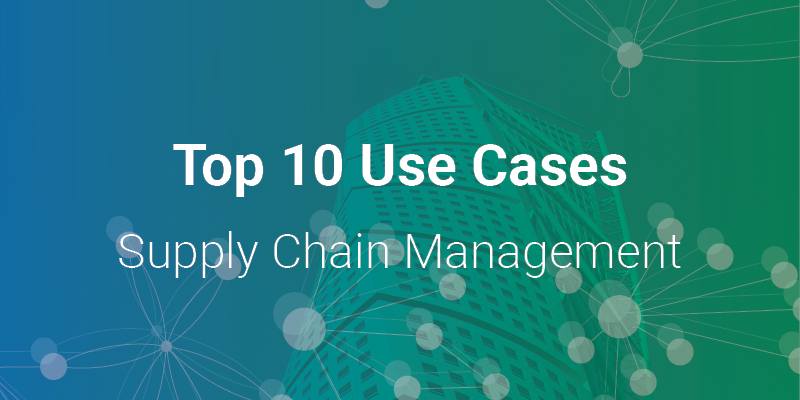But how do companies today use graph databases to solve tough problems? In this blog series, we’ll cover the top 10 use cases for graph technology and for each we include a real-world example. This blog series continues with a look at using graph technology with knowledge graphs.
Our last blog focused on ways to use graph technology to create strong anti-money laundering programs. In this week’s blog, we turn to another data and logistics challenge: supply chain management. Supply chain management is highly dynamic by nature and graph technology provides the agility and tools to generate data-driven insights and predictive analytics to improve supply chain performance.
Use Case #5: Supply Chain Management
By nature, supply chain management is dynamic, with many moving parts, and where bottlenecks may occur at any given point. The challenge is that the volume and detail of data generated by traditional databases lacks real-time, accurate information processing capabilities.
Big data is driving many (if not all) industries today, but supply chain management really is the perfect use case for data-driven insights, predictive analytics and productivity assurance.
As data only stands to increase, you’ll increasingly face challenges to keep track and maintain control.
Why Use Graph Technology for Supply Chain Management?
Given that master data, by definition is highly shared, this struggle tends to cost business agility in a way that ripples throughout the organization. Our architectures have focused on getting data to fit a single definition of the truth, something most of us come to realize is not a feasible solution in the long run.
Supply Chain Management Data Segments
- Distributing network resources to meet demand
- Route planning for time and transport costs
- Customer management to keep them coming back
- Marketing to acquire new customers and drive revenue
- Risk analysis of potential accidents and extraordinary events
- Maintenance work, renovations and asset purchases
- Distribution centers and warehouse management for proper allocation of capacity and available space
Example: Transparency-One
Today’s supply chains are vast and wide-ranging, which makes them fertile ground for risk. This makes transparency both more vital and more complex.
Recognizing this problem, Transparency-One developed a platform which allows manufacturers and brand owners to learn about, monitor, analyze and search their supply chain, and to share significant data about production sites and products.
After 2013, it was deemed necessary to expand this mapping to include more detailed information about all elements in the supply chain (products, supply chain mapping, etc). Chris Morrison, Chief Executive Officer at Transparency-One, said: “The challenge was even greater as the area was very new to our clients, and no market solution offered real complete transparency.”
To develop the solution, Transparency-One initially turned to a classic SQL database-type solution. But, it quickly realized that the volume and structure of information to be processed would have a major impact on performance, causing considerable problems.
So, the Transparency-One team began to look at graph databases. “As we had decided on a graph database, we looked at which databases of this type wereused by leading players,” Morrison said. “The answer was clear and unequivocal: It was Neo4j, the world leader in this field with an established reputation.”
Transparency-One chose Neo4j because only a graph database could meet the requirements of the platform; the decisive factors were Neo4j’s capacity to manage large volumes of data, and the fact that it is the most widely used database of this type in the world, by both large companies and startups.
The project was soon up and running and a prototype was built in less than three months. Since then, Transparency-One has extended the solution with the addition of new modules, and it is currently being deployed by several companies.
Conclusion
Traditional relational systems have their benefits, but traversing a network of master data is expensive, less agile and slow.
With a graph database, you achieve global storage for a 360-degree view to effectively manage and leverage your supply chain management data connections. The graph model also makes it easy to evolve as data sources change over time, giving you flexible performance and scalability enabling real-time decision making no matter how large the dataset.
Next week’s blog, the sixth in this 10-part series, analyzes how graph database technology can empower network and IT operations management by assisting in the ability to model, store, and query network and IT operational data.
Download My Free Copy





